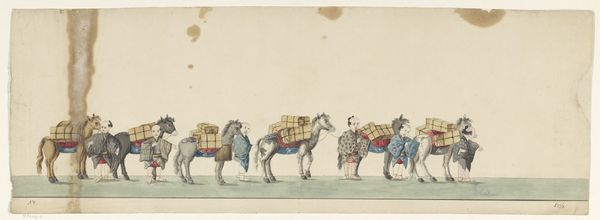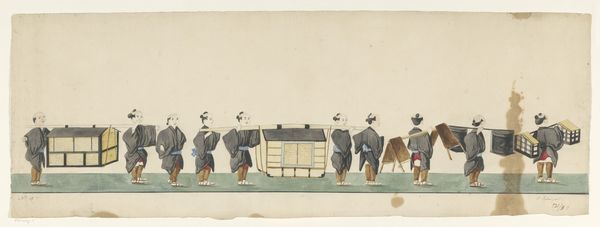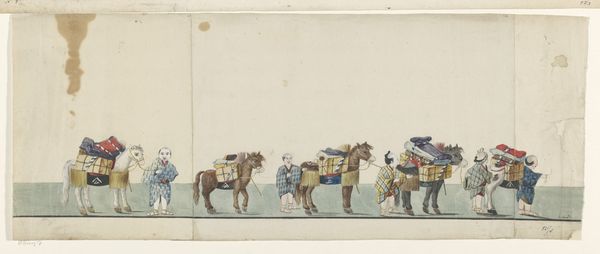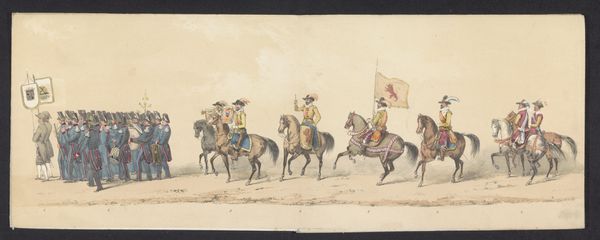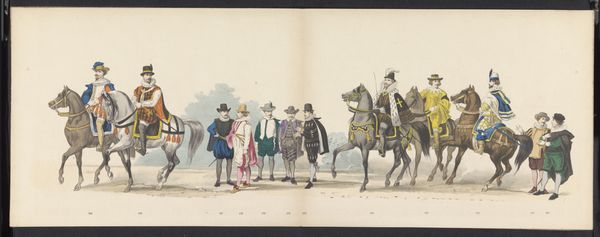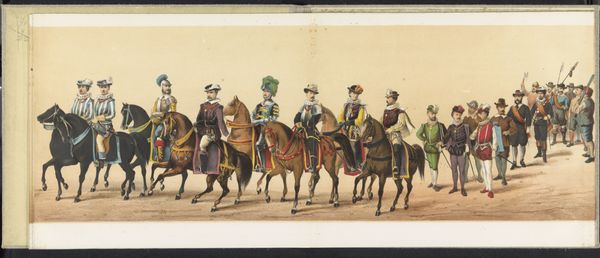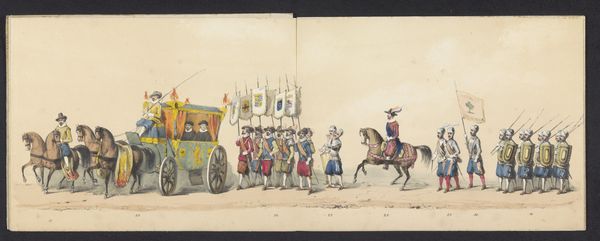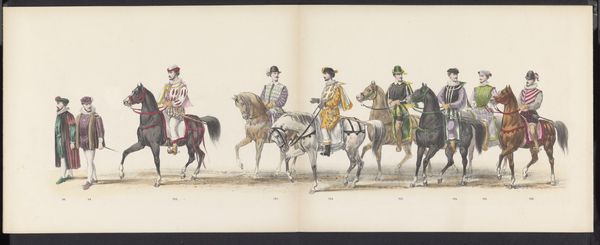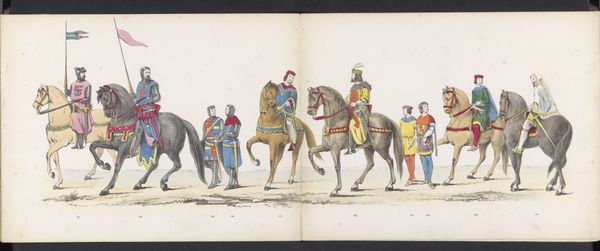
drawing, watercolor, ink
#
drawing
#
asian-art
#
landscape
#
figuration
#
watercolor
#
ink
#
watercolor
Dimensions: height 27.2 cm, width 76.3 cm
Copyright: Rijks Museum: Open Domain
Curator: This delicate watercolor and ink drawing, aptly titled “Tekening,” was created around 1775 by H. Rolland. It offers a glimpse into what seems to be a procession or journey. What strikes you initially? Editor: Hmm, a parade of solemn figures. A touch melancholic, perhaps? The muted colors give it a faded, dreamlike quality. I immediately want to know where they’re going and what weighty things their little ponies are carrying. Curator: It's fascinating to consider this work within the context of eighteenth-century Orientalism. The piece subtly reflects Western European fascination with and interpretations of Asian cultures. We need to ask what power dynamics are at play when Western artists portray Asian subjects. How do these representations affect our understanding of different cultures? Editor: Power dynamics are totally present, you’re spot on! I mean, there's a slightly detached observation about it that keeps me at arm’s length. But then again, is that distance entirely unwelcome? Maybe the artist wanted a space for contemplation. A quieter telling? I keep getting drawn back to those laden animals—each seems so resigned to their cargo. Makes you wonder about burdens and purpose. Curator: The act of figuration here invites an interesting debate. Are we, as viewers, passively consuming an exoticized portrayal, or can we engage with it critically? Perhaps the work itself sparks introspection on cultural exchange and its inherent imbalances? It’s crucial to view “Tekening” not as a transparent window into Asian life, but as a product of a specific historical gaze. Editor: I agree with you...it demands more. I find myself also looking beyond the surface and getting really drawn into that strange light, the horizon. What I'm finding in the art's imperfections is its truest and most enduring statement: the humanity, frailty, of simply being here and carting our baggage through this world. Curator: Indeed. I'd venture this piece prompts further engagement with intersectional approaches within art history, allowing it to inform our reading of historical works within broader contemporary debates. Editor: And on a personal level, makes you think of lightening your own load, both literally and figuratively, I think.
Comments
No comments
Be the first to comment and join the conversation on the ultimate creative platform.
